It’s one of the oldest stories in the book: somewhere, a child is in peril.
From the foundational fables and fairy tales of Aesop and the Brothers Grimm, to their slick, often neutered Disney analogues; from the wide-eyed wonder of Steven Spielberg’s Amblin adventures, to the coming-of-age terrors of Stephen King; from touchstones within the literary canon—your Oliver Twists, Lord of the Flies, To Kill a Mockingbirds—to the universe unto itself that is YA fiction; few stories speak to us on as primal a level as those that put children up against the outsized terrors of the adult world.
Noir, both film and literature, is rife with its own examples. There’s an entire category of Parenthood Noir that speaks to the ever-changing anxieties of moms and dads—James M. Cain’s hardboiled classic Mildred Pierce lays bare how a mother’s best laid plans paves the road to damnation, while The Chain, Adrian McKinty’s breakout hit from earlier this year, presents the myriad new ways social media might be manipulated by tech-savvy Big Bad Wolves (Oh, granny, what lovely Tweets you have!). Meanwhile, authors like Gillian Flynn and Megan Abbott have delved deep into the dark heart of American adolescence (particularly, American girlhood) to give us some of the most astute, unnerving psychological thrillers of the modern era.
Adjacent to all of the above is a subgenre (or, perhaps more accurately, a sub-subgenre) of books and films about children running from or squaring off against predatory forces many times their size and age. These stories play upon the same primal fears as fables and fairy tales, often subtly recreating them. (Truthfully, they are not always that subtle, but neither are they as explicit in their revisionism as, say, the work of Angela Carter.)
While the following 10 novels and films all share a gothic sensibility and pastoral setting, their true connection lay in the way the depict children’s inborn penchant for survival and cunning alongside their physical, mental and emotional vulnerability, presenting them as just as capable and, often times, dangerous as the adults that would do them harm.

The Night of the Hunter, by Davis Grubb (1953)
(Film adaptation, 1955)
“Would you like me to tell you the little story of Right Hand-Left Hand, the story of Good and Evil?”
Chances are, if you’re acquainted with this particular version of the Eternal Struggle, it’s by way of Charles Laughton’s 1955 film noir masterpiece. Anchored by Robert Mitchum’s charismatic and terrifying performance as “Preacher” Harry Powell, a serial wife killer moonlighting (literally) as a man of God who haunts a hardscrabble brother and sister pair throughout the Depression-era South in pursuit of a stolen fortune, The Night of the Hunter is the skeleton key for this particular narrative (and the source of this list’s title).
Much of the film’s esteem comes from it being the first—and sole—directorial effort from Laughton. Impressive a feat as that is, he (and screenwriter, James Agee) had a perfect blueprint to work from in Davis Grubb’s 1953 novel, with almost all of the dialogue, as well as several striking visuals—including the chilling discovery of a woman’s body floating at the bottom of a lake and the ghostly specter of Preacher’s silhouette, as viewed by a terrified little boy from the window of a barn, cutting across the wide and empty landscape—coming straight from out Grubb’s darkly poetic prose.
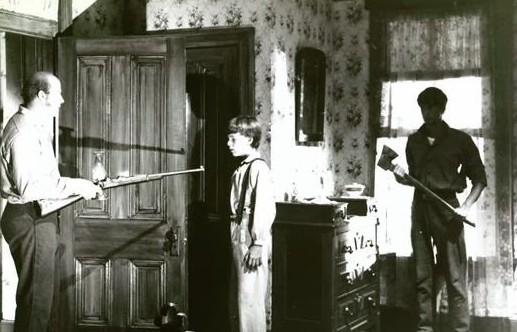
The Fool Killer, by Helen Eustice (1954)
(Film adaptation, 1965)
If Grubb’s novel has been overshadowed by its film adaptation, at least his story found purchase within the popular conscience and culture, which is more than can be said of The Fool Killer. Neither Helen Eustice’s original novel nor the movie version of a decade later are much regarded or even remembered today, although that would certainly change if they ever receive the reissue they deserve. (They’d be right at home at NYRB Classics and the Criterion Collection, respectively.)
Eustice’s novel takes its inspiration from the Southern folk tale of “The Fool Killer,” a wandering giant who wields a scythe to cut down those individuals (adults and children alike) that behave in foolish ways. At least, that’s the story told to George Mellish, a young runaway traveling through Reconstruction-era South. Along his journey, Mellish takes up with a variety of characters, most importantly Milo Bogardus, a Civil War veteran suffering from a severe case of shell shock. Despite their strong and immediate bond (most of which comes off as brotherly affection, although it also contains an unmistakable and, due to the difference in their ages, uneasy erotic tinge), Milo’s influence is slowly revealed to be a dangerous one, especially in the way his violent actions mirror those of the titular boogeyman.
The story never quite goes where you expect it to and while it is less of a straightforward thriller than The Night of the Hunter, it’s often more unsettling. This is especially true of the movie, featuring Anthony Perkins at his tragic and frightening best as Milo, and directed by Mexican filmmaker Servando González, who brings a surrealist, Buñuellian flourish to the material.
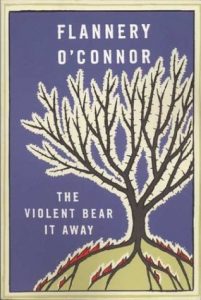
The Violent Bear It Away, by Flannery O’Connor (1960)
Staying in Southern Gothic terrain, we come to Flannery O’Connor’s second (and final) novel. While not a mystery novel in the traditional sense, the story, like all O’Connor’s writing, is obsessed with the great mystery of Western religion—the mystery of Christ’s nature.
Our shepherd through the “Christ-haunted” South of O’Connor is yet another young orphan, one Francis Tarwater, kidnapped by a mad evangelist uncle when he was just a babe and raised to be a prophet. When his uncle dies suddenly, Francis abandons their ramshackle cabin (after first setting it ablaze) and sets out into the big city. There, he reconnects with his older cousin Raybar, as well as Raybar’s mentally challenged young son, Bishop, whom Francis’s uncle had tasked him with baptizing.
Torn between his uncle’s haunting influence and his cousin’s strict adherence to secular intellectualism, Francis finds himself making to a series of increasingly dangerous choices, the consequences of which result in sexual assault, arson and avunculicide (this book contains several of the most shocking scenes in all of O’Connor’s fiction, which is saying a lot). Although there is no flesh-bound antagonist stalking Francis, it’s clear that he is trying to outrun no less than the dueling forces of Christ and Satan. That he ultimately chooses the former is no great relief—salvation, in this case, looks an awful lot like damnation.

Let’s Kill Uncle, by Rohan O’Grady (1963)
(Film adaptation, 1966)
Of all the novels on this list, this gleefully twisted tale from Rohan O’Grady (the nom de plume of Canadian author June Skinner) is the closest to YA fiction, although its dark whimsy and macabre charm is offset by a cutting and unsentimental look into the psychology of children, as well as the moral compromises we make as adults.
The tale concerns two mischievous pre-teens—rich orphan Barnaby and latchkey kid Christie—summering together on an unnamed island off the coast of British Columbia. Convinced that Barnaby’s uncle, soon to arrive on the island and take up guardianship duties, is plotting to kill him in order to steal his 10-million-dollar inheritance, the duo hatch an ingenious plan: they’ll simply kill Uncle first.
O’Grady’s story is brimming with surprises both delightful and disturbing, and prose so enthralling you wish you could live in her sentences. It truly is a perfect novel. Unfortunately, the same praise can’t be heaped on schlockmaster William Castle’s 1966 adaptation, which keeps only the skeleton of the plot and chuck’s the rest. In and of itself, the film is still an enjoyable odd-ball chiller, but the world really could use a more faithful adaptation, if only to introduce a new generation to O’Grady’s many charms.
(The more fanciful aspects of the story make it a perfect fit for one of Wes Anderson’s stop motion ventures—Night of the Hunter crossed with his own Moonlight Kingdom.)

The Mad and the Bad, by Jean-Patrick Manchette (1972)
Moving from North America to Europe, we take a header straight into the hardboiled with this kinetic, politically charged shotgun blast of a novel from French noir master Jean-Patrick Manchette.
Like the previous entry, TM&TB concerns the murderous machinations of an avaricious uncle seeking to knock off his young and newly orphaned nephew in order to steal his inheritance. To that end, he enlists the help of a skilled contract killer and some hired goons, but their seemingly foolproof plan falls to pieces once the boy’s nanny, a mentally unstable young woman with a criminal past who the schemers had planned to use as a patsy, proves far more capable and ruthless than any of them. What follows is a bloody game of cat and mouse across the French countryside, one that leaves a heap of mangled bodies—including several unlucky bystanders—in its wake, ultimately ending in a gloriously gruesome final showdown at an isolated castle.
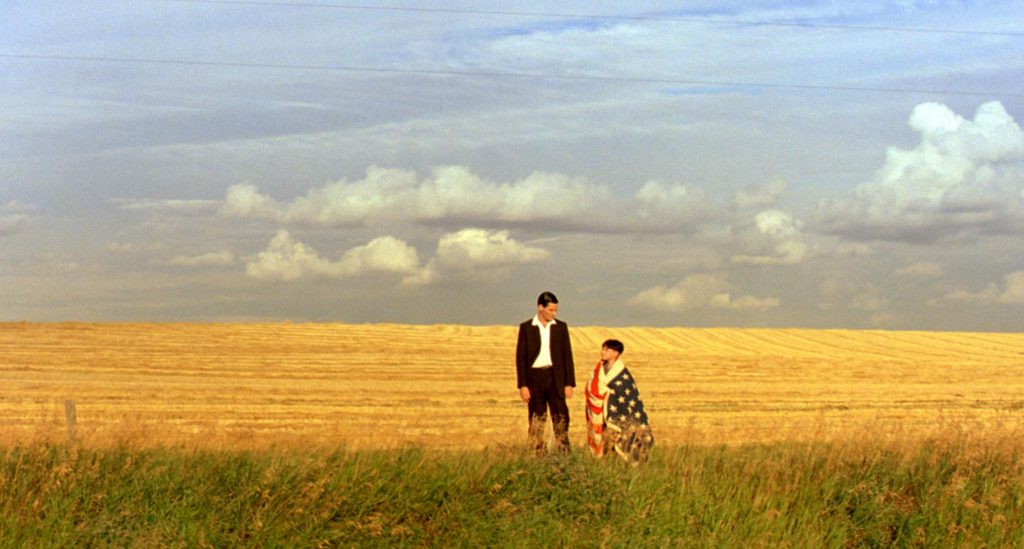
The Reflecting Skin (1990)
Set amongst the golden wheat fields and sepia skyline of 1950’s Idaho, English artist/playwright/novelist/filmmaker Philip Ridley’s debut feature follows eight-year-old Seth Dove as he attempts to make sense of his nightmarish surroundings, including a deeply troubled home life—his mother is an abusive religious zealot, his father is a sexually confused depressive, and his older brother (Viggo Mortensen, in one of his earliest roles), newly returned from the army, is suffering from PTSD and radiation poisoning—as well as a growing obsession with the alluring and mysterious widow living next door, who may or may not be a vampire. Adding to his troubles, a roving gang of greasers are abducting and murdering all of his young friends. Essentially, The Reflecting Skin is what you’d get if Stand by Me had been directed by David Lynch.
Not surprisingly, the film was declared “déjà un culte” (“already a cult”) when it premiered at the 1990 Cannes Film Festival but was subsequently lost in the sea of home video, before disappearing almost entirely in recent years. Thankfully, a newly restored version, which played at arthouse theaters across the country earlier this year and is now available on Blu-Ray, has helped audiences and critics rediscover the film.
For fans of the bizarre and surrealist visions of Lynch, Alejandro Jodorowsky and Guillermo Del Toro—as well as the violent and grotesque fictions of Flannery O’Connor, Cormac McCarthy and Donald Ray Pollock—Ridley’s film is a must-see.
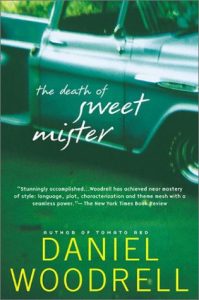
The Death of Sweet Mister, by Daniel Woodrell (2001)
Next to Winter’s Bone (which could just as easily have taken this spot), The Death of Sweet Mister is Daniel Woodrell’s—the hardboiled laureate of the Ozarks—finest novel to-date. The story focuses on 13-year-old Shug Atkins, a lonely, overweight, and embittered youth living with his gorgeous, alcoholic mother Glenda and his maybe-father, the abusive and unhinged Red, who moves in and out of their lives at random, seemingly just to torment them. When Glenda starts an affair with a cool city slicker, it sets off a chain of events that lead to murder, torture and something far, far worse.
The Death of Sweet Mister is bildungsroman filtered through pitch-black noir and Greek tragedy. Of all the stories presented here, it is ultimately the most devastating in its depiction of the corruption of youth and death of childhood innocence.

Tideland, by Mitch Cullen (2000)
(Film adaptation, 2006)
The third and best-known entry in Mitch Cullen’s Texas Trilogy, Tideland is a grimy update of Alice’s Adventures in Wonderland set in the desolate badlands of the Lone Star state. After both of her junkie parents overdose, young Jeliza-Rose spends a summer living alone at her grandparent’s abandoned farm. Or, not quite alone, as she has the corpse of her father and a collection of sentient doll heads to keep her company. Eventually, she falls in with real—and really dangerous—people in the form of her neighbors, a brother-sister pair with a past connection to her father and some upsetting family secrets of their own. Jeliza-Rose processes her harsh and fearsome circumstances by delving further and further into an elaborate fantasy world, but eventually, the darkness that surrounds her on all sides threatens to overwhelm both realities.
Cullen’s novel was adapted in 2006 by Terry Gilliam, who you would assume would be perfectly suited to the material given his penchant for magic realism and dark phantasmagoria. However, the film ended up being his most divisive to date, the ugliness of the story proving too repulsive for many a queasy viewer. But Tideland also has its champions, including fellow surrealist maestro David Cronenberg, who hailed it as a unique and “poetic” horror film and one of the best movies of its year. It’s a hard watch to be sure, but if you respond to the other works listed here, it might just be your cup of LSD.
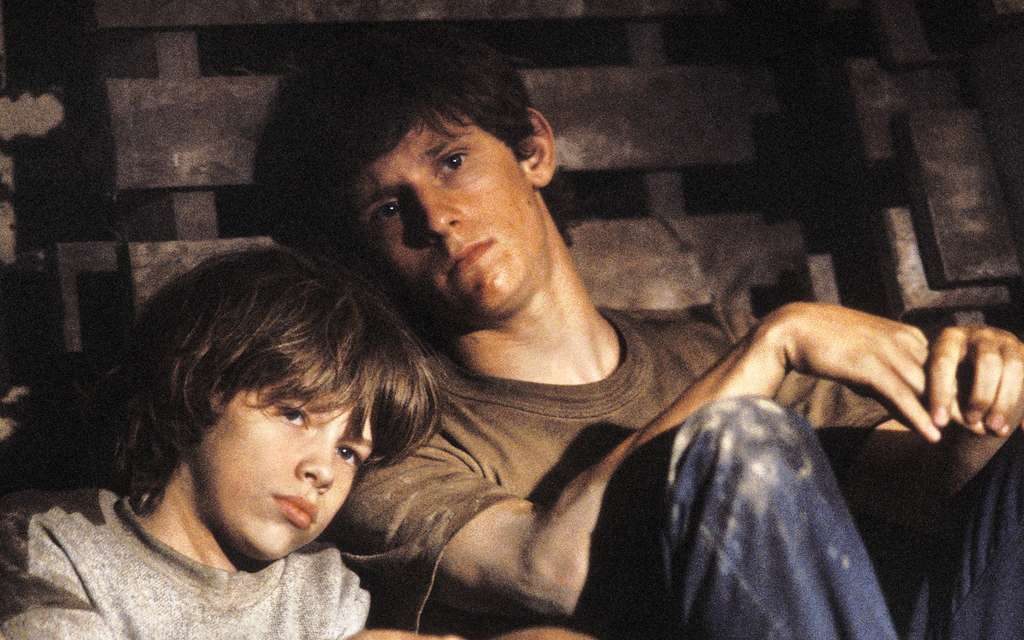
Undertow (2004)
Director David Gordon Green is known for moving between vastly different projects. On the one hand, there are his cinematic tone poems, such as his debut coming of age feature George Washington (2000) and the tense character study/crime drama Joe (2014), and on the other, his more mainstream fare, including the stoner action-comedy Pineapple Express (2008), tearjerker drama Stronger (2017), and the most recent remake of Halloween (2018). Along with being his most underrated film, 2004’s Undertow is also the perfect bridge between the two.
Yet another story about a greedy and murderous uncle (Josh Lucas, in a menacing performance that should have led to better roles) chasing down his young nephews (this time through the swamps and backwoods of Georgia) in pursuit of a family fortune (here, a case of gold coins), this is the most grounded of all the films and novels on this list. Yet, despite its neo-realist aesthetic, the film retains a mythic, almost transcendent quality. It wouldn’t be entirely wrong to think Green was going for The Night of the Hunter by way of Terrence Malick.
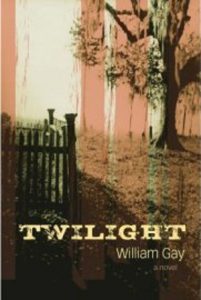
Twilight, by William Gay (2006)
No, not that Twilight.
Shortly after Stephanie Meyer’s glittery teen vampires sunk their fangs into the popular culture, Tennessean author William Gay released this backwoods saga of survival and terror. Like its more famous namesake, the story revolves around young people beset by the forces of darkness, although the monsters here are of the strictly human variety.
Following the death of their father, Kenneth and Corrie Tyler come to suspect the local undertaker, a grotesque named Fenton Breece, has done something improper with his body. Their suspicions are borne out when Corrie discovers photographs of Breece engaged in unnatural acts with several corpses, but her attempts to blackmail the heinous undertaker backfire when he hires a murderous ex-con strongman to retrieve the incriminating evidence and silence the siblings once and for all.
If Undertow is Night of the Hunter by way of Terrance Malick, then Twilight is Night of the Hunter by way of Cormac McCarthy (an early supporter and mentor to the sadly deceased Gay). While Gay’s prose can come off a bit too redolent of McCarthy, the story is still a harrowing and original spin on this particular narrative, making it a perfect companion piece to Grubb’s novel and a fitting capstone to this list.

















